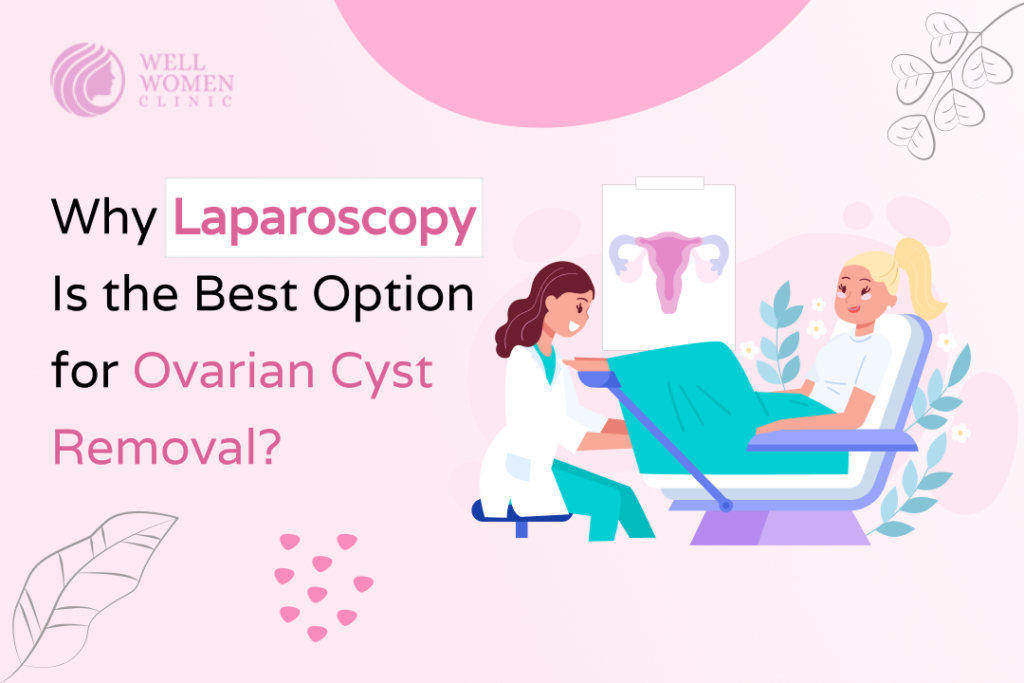Ovarian cysts are basically benign swelling that develops all around a woman’s ovaries. An ovary, often recognized as a structure like a pocket containing fluid or semi-solid substance is a very important part of a woman’s body. A cyst is separated from the tissues surrounding it by a light coating or membrane, giving it the appearance of a bubble or sac-like structure.
While cyst creation is not considered a severe uncomfortable problem, it can induce exacerbated discomfort and, in the worst-case scenario, cancer growth. Such cysts are typically innocuous and appear rather often throughout the female’s pregnancy. In perfect settings, they usually die out after a while, necessitating no complicated treatment.
Ovarian cysts, while generally innocuous, might cause worry if they burst. In this case, the patient should see a specialist for a more complete diagnosis. Although minor cysts prefer to resolve automatically, if a cyst gets to a certain length, it can induce bloating and irregular periods. Some individuals even experience bowel and bladder difficulties as a result of a cyst.
The ovarian cyst is classified into two forms in medicine: normal and malignant development. Although a normal ovarian cyst is typically innocuous and appears as a component of a woman’s monthly cycle, malignant cysts have an unusual up-growth that can be cancerous and need ovarian cyst removal surgery.
Although cysts usually shrink with age, they can occasionally become large enough to create serious issues. If a cyst persists even post a few menstrual cycles along with unpleasant symptoms, people could have it removed surgically and maintain good health with no increased difficulties. There are primarily two kinds of surgical treatments that can provide significant relief in the event of bothersome cysts:
- The laparoscopic operation, often referred to as keyhole surgery, happens to be a useful method with less invasive characteristics. In most circumstances, patients are permitted to return home that very day if the procedure involves the fewest difficulties. A doctor may opt to utilize a unique type of conduit that is big enough to enter a palm in certain conditions. Whenever a hand port is utilized, the medical procedure is referred to as “hand aided” laparoscopy. The incision is bigger than other laparoscopic cuts, although it is generally less than the cut required for standard ovarian cyst removal surgery.
- Ovarian cyst surgery is typically used to remove malignant cysts that have formed near sensitive interior areas. In this method, the cut is significantly more visible, including high-risk variables and a lengthier healing period.
Because of its less invasiveness and lower related consequences, ovarian cyst surgery is gaining favour in this age of medical innovations. During the procedure, a tiny incision around the patient’s belly is made to introduce laparoscopic tubing.
A laparoscope happens to be a slender tube-like tool with one camera connected to its end. It is mostly utilized to display a crisp image of the inside organs as well as the target operation site. When the spot has been found, the surgeons will fill the belly with co2 gas to increase visibility and provide room for operations.
A few additional cuts are made on the body to implant surgical equipment to safely remove the cysts forever. If a cyst is discovered to be malignant, the surgeon may also propose that the woman’s ovaries be removed. When the surgery is over, the doctor seals the wounds with surgical stitches.
Because of the additional benefits connected with this treatment, laparoscopic hysterectomy surgery is strongly recommended. This surgery’s scars are quite minimal, allowing patients to recuperate quickly. The discomfort caused by the procedure lasts for a very short period of time. The danger of infections and other consequences of surgery is also factored in. Individuals may suffer modest uncomfortable cramps for two or three days after surgery. For a safe and healthy laparoscopic hysterectomy surgery, visit the Well Women clinic today!





